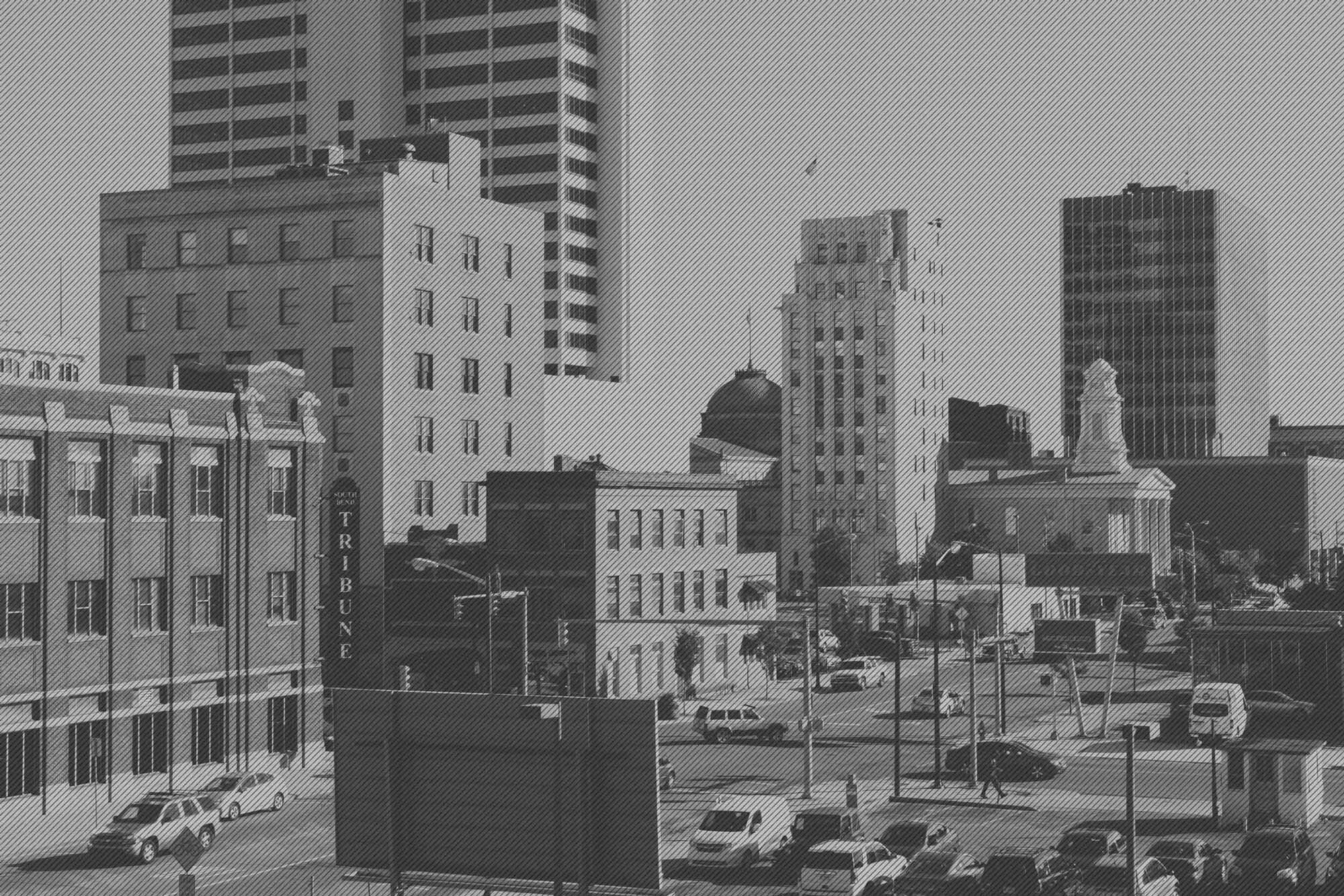
"And we’ve just scratched the surface," he said. "Right now, a little over 30 percent of Union Station’s capacity is being used, so we have a lot of room to grow."
Union Station
When Kevin Smith bought South Bend’s Art Deco−style Union Station train depot in 1981, he had no plans to turn it into a cutting−edge, digital telecommunications "carrier hotel." Carrier Hotel: is a type of data centre where equipment, space, and bandwidth are available for rental to retail customers.[1] Colocation facilities provide space, power, cooling, and physical security for the server, storage, and networking equipment of other firms and also connect them to a variety of telecommunications and network service providers with a minimum of cost and complexity. Wikipedia
"I just liked the way the building looked," says Smith, president of Global Access Point, a telecom firm he started in 2003. "Frankly, I fell in love with the architecture," adds Smith, a 1978 University of Notre Dame graduate. "It’s a grand structure." So Smith followed the building through the bankruptcy process, put in a bid and got it for $28,000 − which he says was still a lot of money for him nearly three decades ago. Technology Mall: Location of a variety of vendors where consumers can pick and choose the services they need ’a la cart.’ Vendors can manage the complexity of the modern telecommunications world, allowing end−users to concentrate on their own business and services.
Since then, Smith has invested nearly $16 million into Union Station, which is located adjacent to the city’s Ignition Park, a budding, 140−acre technology research and manufacturing center being built on the old Studebaker grounds. Union Station is one of Indiana’s two carrier hotels − the other is in Indianapolis. Smith has turned this aging train depot into a state−of−the−art data storage center, optic−fiber transmission hub and virtual technology mall. Along with the ChoiceLight− whose dark fiber boasts unlimited bandwidth, redundancy and high−speed − Union Station has become an engine for economic growth in the South Bend region.
In its heyday, the 80−year−old Union Station was a major transportation link, with three separate railroads − hence the name "Union" − bringing passengers into the city where they could disembark or board trains and continue to other destinations. Passenger service ended in the mid−1970s, however, and the structure fell into disrepair. Eventually, it became a hangout for several gangs with ominous names, like the Death Squad and the Renegades. Smith and his father bought the Railroad Express Agency building − once used to handle freight − beside Union Station in 1979, and converted into a Deluxe Sheet Metal shop and offices.
When Smith took over Union Station, the front door had been knocked down. "There were no keys for the building," he recalls. "It was unsecured, just a shell of a building. I had to walk in the same door the gangs used. That was my introduction to the Grand Hall of the Union Station and it can be seen in the picture I have in the front foyer now." Luck was with Smith: Once he started to restore the building, the gangs left.
"I was a little worried about how to deal with them," he says. "But I just pretty much worked around the clock. They left me alone, perhaps because they thought I was crazier than they were. "But I’d been in the neighborhood for a couple of years and never had any problems with them. I don’t know if they had any appreciation for the Art−Deco style of the depot," he jokes. "More likely, they respected me because I was trying to improve the area." By 1983, Union Station’s Grand Hall was being used for formal events.
It had also become the home of Smith’s Soft Chip Technology Co., which did software development on a national basis for the construction industry, integrating CAD (computer−aided design) and CAM (computer−aided manufacturing) along with accounting. Several years later, Smith was approached by Rochester Communication, which wanted to put a regeneration station to "hop," or send, boosted radio signals forward, on the second floor of the depot. Back then, he said, Rochester Communication was running microwave hops using railroad easements. (Today, digital telecom firms run fiber long those easements and use Union Station as a regeneration point, among other things.)
"They put their microwave dishes along the railroad tracks," he said. "They wanted someplace to put their ’regen’ equipment and thought my building might be a good one." Smith began working with Rochester, which was later bought out by another firm, and tried to learn all he could about the telecom industry. "I did all the general construction for them and a lot of design−build," he said. "They needed to keep expanding and I ended up learning a great deal in order to better help them."
Fortunately, the South Bend train depot left a legacy Smith could exploit. "Union Stations were set up to bring convergent railroads into one common place," he said. "Each of those national railroads had easements and they were also self−contained linear cities. "When they built the railroads, they built their communications infrastructure for telephone, switching, telegraph and all those sorts of things. So it became a logical solution for national carriers of the digital variety to go to them to negotiate an easement for their fiber, potentially coast to coast.
"And that’s what happened. Union Station was where three of these national railroads focused. To make a long story short, that’s why all the fiber ended up coming in behind this depot." Because Smith understood what was happening early on, he resolved to make it easy for potential clients to do business. "I wanted to knock all the barriers down," he said. "So I put in a six−inch duct bank to connect all of these assets that belonged to the railroads and then I put in redundant six−inch and redundant four−inch ducts, too.
"I made it extremely easy for anyone who was on their easements to get into the building, which normally could be challenging," he said. "I also made sure I had generator bays ready and anticipated their other needs." Now, along with other major U.S. cities like Chicago, New York, Atlanta, San Francisco and Los Angeles, South Bend has a carrier hotel. It is home to nearly 22 telecom companies, with which area firms can choose to do business. Instead of a train depot, Smith says, Union Station is now a digital telecom station where companies can hop on and off the information highway.
"Not only do carrier hotels have regeneration capabilities, but they are also designed to have add/drop capabilities," he says. "They are an on−ramp or portal to fiber−optic networks that can pretty much take you anywhere in the world instantly. "At our ’hotel,’ one regional or national carrier can take traffic and exchange it with another or a local carrier, like Metronet [ChoiceLight]. It’s a place with a convergence of digital pathways where long−, medium− and short−haulers come together and their signals can be intermixed and connected to one another."
Smith said ChoiceLight is a boon to South Bend’s telecom structure and has helped his carrier hotel thrive. "A regional carrier can buy Metronet’s [ChoiceLight's] dark fiber and light it directly or a local carrier or business can choose to light and operate their own," he said. "By them coming back to Union Station, they can connect to whomever they wanted to. That’s the beauty of the Metronet [ChoiceLight]. It gives people choices. They can have equipment at Union Station and then pick which carrier or how many of the carriers they want to use. It’s simply changing a cross connection − a little fiber jumper between one to another − so it gives them a lot of flexibility."
Smith said it’s his goal to make things easier for companies, schools, hospitals and other entities to negotiate the technology side of their business. "The objective is to have a big, red easy button, because people have enough to do to run their enterprises," he said. "I’m a vendor neutral place, so I encourage connectivity at whatever level makes sense. I support different initiatives." He said companies can shop at the Union Station’s virtual technology mall and pick and choose the services they need.
"The term mall means you can select from a variety of virtual vendors who can manage the complexity of the modern telecom world. The consumer just buys the service. And that’s the whole objective behind Union Station, to facilitate technology. I’ve tried to create a place where businesses can connect to carriers, or host their own servers and data centers or contract with a company that does that for them. My objective is to stay ahead of the technology curve, whether they are physical − the space itself − or bandwidth demands. Here at Union Station, you can go anywhere in the world with any capacity you want."
